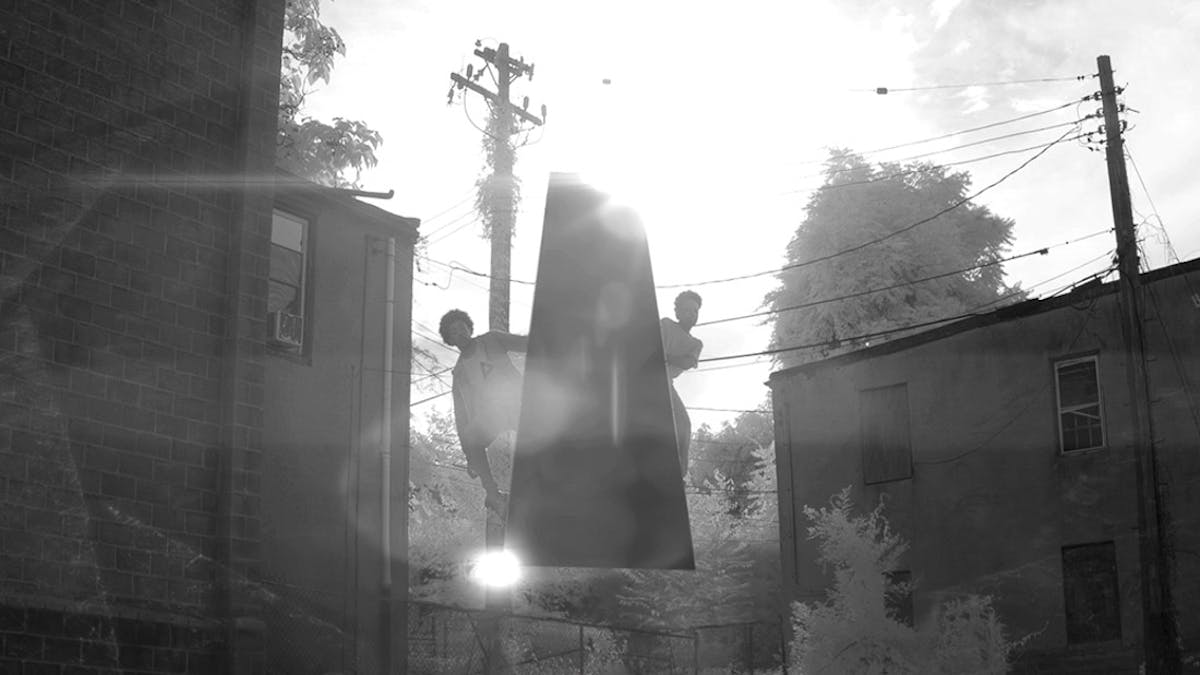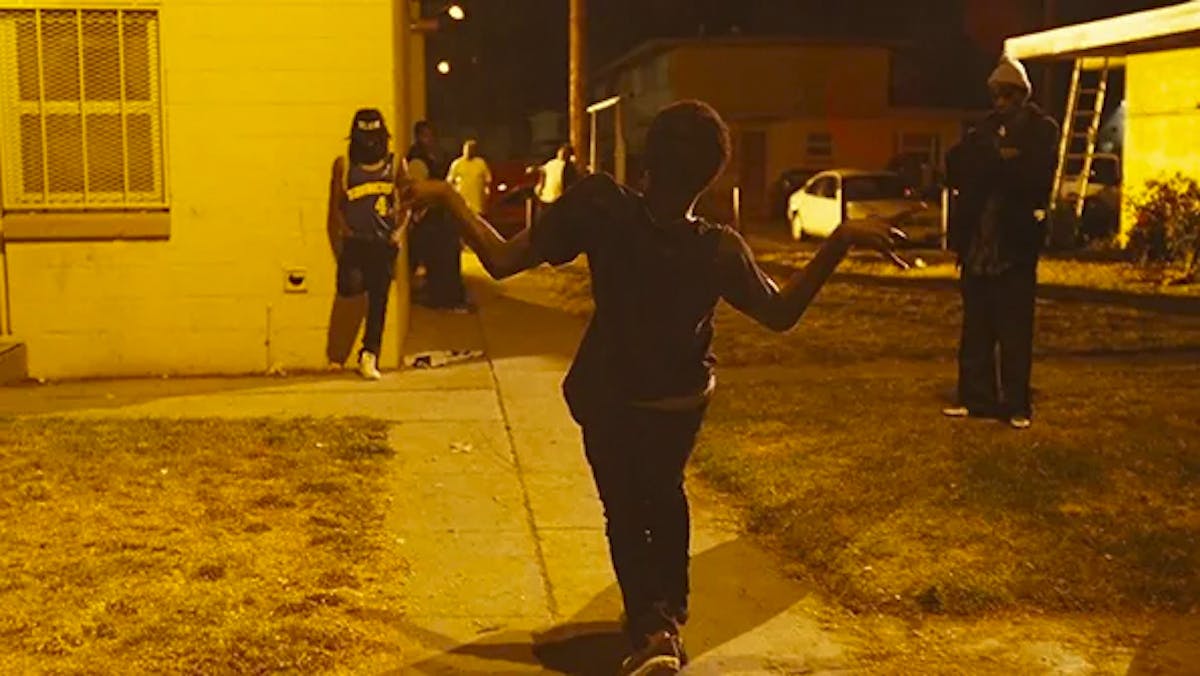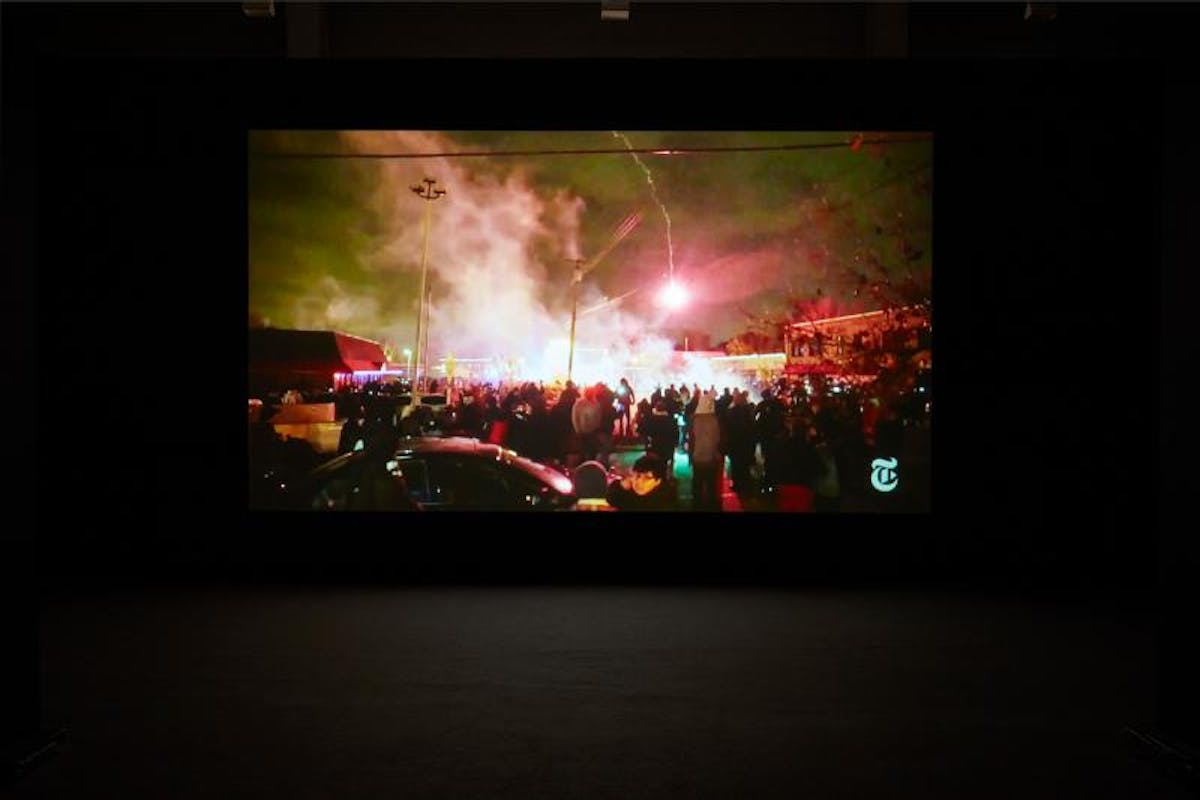As Told to G/D Thyself is a series of vignettes set to jazz Saxophonist Kamasi Washington’s 2018 album, Heaven and Earth. The album flows between resounding chorus and singularity of voice. Repetitive speech and solo saxophone 3Performance of musical instruments in public space is reminiscent of Cauleen Smith’s H-E-L-L-O which uses historically significant sites in New Orleans. contrast a choir and orchestra. The ease of sonic movement, change of rhythm and pace in As Told is matched visually by the intercutting of differing vignettes. We move from sparse interiors such as a kitchen or school corridor, to a wide expanse of scrubland and an eerie forest. The film is made by a collective of filmmakers, The Ummah Chroma, meaning ‘community of colour’, comprised of Terrence Nance, Jenn Nkiru, Marc Thomas, Kamasi Washington and Bradford Young. The focus on physical bodies producing affect allows for a loose narrative evoking a music-driven spiritualism, the fate of Black youth, sites of trauma, the warmth of kinship and Black joy. Surprise, joy, excitement, fear, distress – both positive and negative forms of affect are present in the film.



